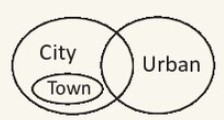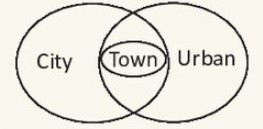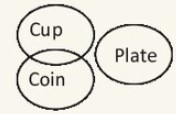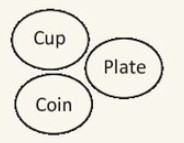Reasoning Subject Model Questions for Bank Exams

Model Questions
Directions (Q.No.1-6): Read the information carefully and answer the following:
There are eight persons namely A, B, C, D, E, F, G and H who are born on the same date and in the same month but in different years i.e. 1971, 1974, 1980, 1983, 1991, 1999, 2000 and 2007. Their ages are considered as on the current year of 2018. G is born in even number year, but not born in the year, which does not divisible by 4. A is 35 years old now. B is 17 year older than F, who is 8 years younger than A. There is eight years gap between the age of E and the age of D. H is nine years younger than C, but not born in 1983. E was born earlier than G.
1. Who is the youngest person among them?
1) G 2) A 3) E
4) D 5) None of these
2. Who is younger than only two persons?
1) C 2) B 3) H
4) A 5) None of these
3. Four of the following five are alike based on a particular property. Find out the one which is not matching with the other four.
1) C 2) D 3) A
4) F 5) H
4. Who is ranking four in the descending order of their ages?
1) G 2) A 3) E
4) D 5) None of these
5. If the uncle of C is 18 years older than C, then what is the age of C's uncle?
1) 62 2) 56 3) 65 4) 63 5) None of these
6. Who is elder than only the youngest?
1) G 2) F 3) E 4) D 5) None of these
Directions (Q.No.7 - 12): Read the information carefully and answer the following:
There are six friends A, B, C, D, E and F live on different floors in the same building having six floors numbered 1 to 6. Ground floor is floor numbered one. Each one has a different occupation, viz; Accountant, Doctor, Engineer, Lawyer, Librarian and Professor. All the six persons seated in a single row at equal distance from each other, facing north direction.
C, a Doctor, is seated to the immediate left of the Librarian who lives in 6th floor. Lawyer, who stays in first floor, is not seated at the extreme end and is third to the right of the person who stays in 3rd floor. There is only one person seated between Professor and Accountant. Neither Professor nor Accountant is immediate neighbour of Doctor. B, staying in fourth floor is seated at one of the extreme ends and to the immediate right of F. F is not the Lawyer. There are two persons seated between A and Accountant. D is seated to the immediate left of the person who stays in fifth floor. E does not stay in sixth floor.
7. C stays in which floor?
1) 3rd 2) 5th 3) 6th 4) Can't be determined
5) None of these
8. Who is seated at the extreme left end?
1) C 2) A 3) E 4) D 5) None of these
9. How many persons are seated between A and the person who stays in 4th floor?
1) One 2) Two 3) Three 4) Four 5) None
10. What is the occupation of D?
1) Librarian 2) Lawyer 3) Professor 4) Accountant
5) Engineer
11. Who is seated at the extreme right end?
1) Librarian 2) Lawyer 3) Professor 4) Accountant 5) Engineer
12. Four of the following five are alike based on a particular property. Find out the one which is not matching with the other four.
1) C - 6th floor
2) Librarian - E
3) Professor - 1st floor
4) Engineer - 5th floor
5) Accountant - 4th floor
Directions (Q.No. 13-17): In a certain instruction system, the different computation processes are written as follows:
(I) P % Q $ R means P is multiplied by the sum of Q and R
(II) P D Q © R means P is subtracted from Q and the resultant is divided by R
(III) P # Q * R means P is added to the resultant when Q is divided by R
(IV) P p Q @ R means the product of Q and R is subtracted from P
In each of the questions below, a set of instruction sequence is given. You are required to find out the outcome which should come in place of question mark (?) in each of the given sets of sequence.
13. 20 # 125 * 25 = M
M % 60 $ 40 = ?
1) 1660 2) 2500
3) 2800 4) 8250
5) 7240
14. 100 D 300 © 5 = Z
160 p Z @ 2 = ?
1) 80 2) 140 3)60
4) 30 5) 70
15. 12 % 2 $ 8 = A
A D 200 © 8 = ?
1) 4 2) 2 3) 10
4) 3 5) 7
16. 20 % 10 $ 20 = T
T p 150 @ 4 = ?
1) 40 2) 100 3) 20
4) 0 5) 10
17. 35 # 300 * 15 = M
450 D 1000 © M = ?
1) 2 # 5 * 5 2) 5 p 3 @ 5 3) 8 % 1 $ 2 4) 4 # 24 * 4
5) None of the above
Directions (Q. No. 18 - 21): In each question below are given two statements followed by two conclusions numbered I and II. You have to take the given statements to be true even if they seem to be at variance with commonly known facts. Read the following statements and then decide which of the given conclusions logically follows from the given statements, disregarding commonly known facts.
Give answer:
1) If only conclusion I follows.
2) If only conclusion II follows.
3) If either conclusion I or II follows.
4) If neither conclusion I nor II follows.
5) If both conclusions I and II follow.
18. Statements:
All towns are cities.
Some cities are urban.
Conclusions:
I. At least some towns are urban.
II. No town is urban.
19. Statements:
Some parrots are green.
Some birds are parrots.
Conclusions:
I. At least some birds being green is possible.
II. All parrots being bird is a possibility.
20. Statements:
No cup is a plate.
No plate is a coin.
Conclusions:
I. No cup is a coin.
II. Some coins are cups.
21. Statements:
Some boys are honest.
Some intelligent are boys.
Conclusions:
I. All honest being intelligent is a possibility.
II. All boys may be intelligent.
Directions (Q.No.22- 25): Study the following information carefully and answer the questions given below:
There are six persons M, P, Q, R, S and T who are of different heights.
R is taller than Q. T is taller than M. P is definitely shorter than S. M is not as tall as Q. T is not as tall as P. R is not ranking third in the descending order of heights of these persons.
22. Who is shorter than only the tallest?
1) R 2) T 3) P
4) S 5) Data inadequate
23. Who is taller than only the shortest?
1) R 2) M 3) Q
4) T 5) Data inadequate
24. How many are taller than T?
1) None 2) Two
3) One 4) Three
5) None of these
25. If R's height is 180 cm, and M's height is 170 cm what could be the height of Q?
1) 175 cm 2) 189 cm 3) 182 cm 4) 165 cm
5) None of these
Key with Solutions
(1-6):

1) 4; 2) 3;
3) 5; (Others are born in odd numbered year where as H is born in even numbered year)
4) 2; 5) 3; 6) 1;
(7-12):

7) 1; 8) 1; 9) 3;
10) 2; 11) 5;
12) 4; (In other options first person is immediate left of second preson)
13) 2; 20 + 125 ÷ 25 = 25
25( 60 + 40) = 2500
14) 1;
300 - 100 = 200; 200 ÷ 5 = 40
40 × 2 = 80; 160 - 80 = 80
15) 3;
12( 2+8) = 120
200 - 120 = 80; 80 ÷ 8 = 10
16) 4;
20(10 + 20) = 600;
600 - 150×4 = 0
17) 4;
35 + 300 ÷ 15 = 55
1000 - 450 = 550;
550 ÷ 55 = 10; 4 + 24 ÷ 4 = 10
18) 3;
Possible Venn-diagrams are

(Or)

Thus, either I or II follows.
19) 5; Possible Venn-diagram is

Thus, only I & II follow.
20) 3;

(Or)

Thus, either I or II follows.
21) 5;
A possible Venn-diagram is

Thus, I & II follow
(22 - 25):
R > Q, Q > M, T > M,
S > P > T
Thus, S > P > T > R > Q > M
22) 3; 23) 3; 24) 2; 25) 1.



















